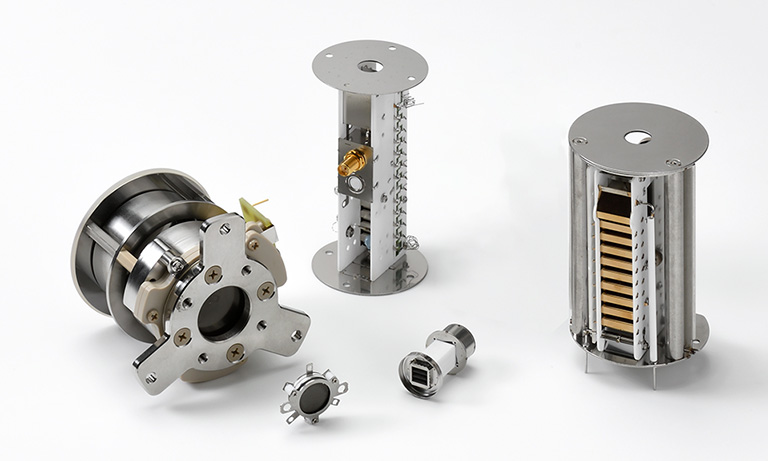United States (EN)
Select your region or country.
Exploring the distant universe
CCD image sensors in the Subaru Telescope's ultra-wide-field prime focus camera
Unraveling the mysteries of the birth of the universe
The Subaru Telescope sits at an elevation of 4205 m at the peak of Mauna Kea on the island of Hawaii. Its ultra-wide-field prime focus camera contains CCD area image sensors made by Hamamatsu Photonics that boast the highest sensitivity in the world.
Here breathes the spirit of Hamamatsu Photonics, to do what others cannot, to create what has never been.
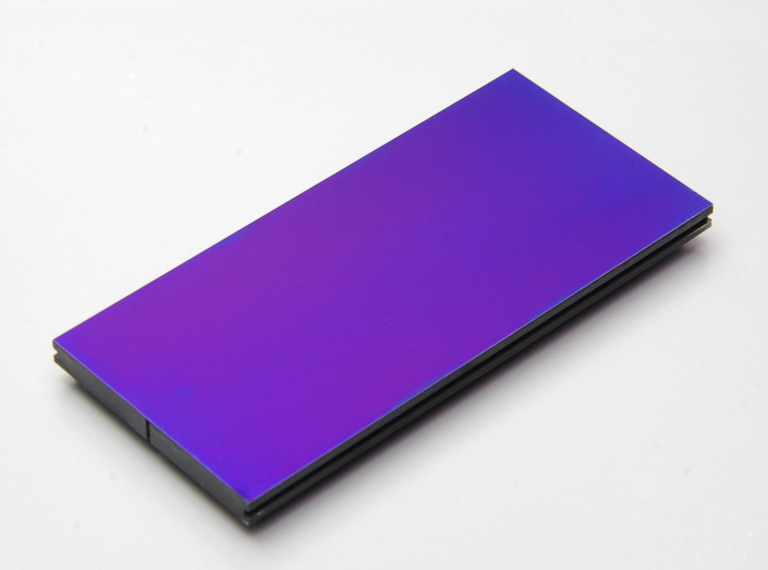
CCDs installed in the HSC
Keyman Interview
What is the Subaru Telescope?
The Subaru Telescope is a large national optical/infrared telescope at the peak of Mauna Kea on the island of Hawaii. It is a next-generation telescope with revolutionary observational power. The purpose of the Subaru Telescope is to measure dark energy and the history of the universe's expansion. It uses gravitational lens effects to directly observe distribution of dark matter. Thus, it needs to be able to measure an extremely wide range, so, in 2001, development began for a new ultra-wide-field prime focus camera, the Hyper Suprime-Cam (HSC). Test operation began in 2012.
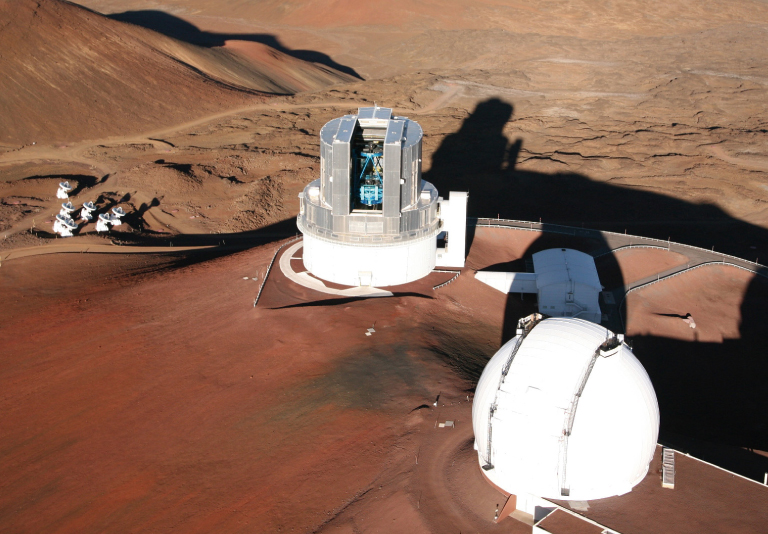
Subaru Telescope at the peak of Mauna Kea (courtesy of NAOJ)
CCDs in the new Hyper Suprime-Cam (HSC) on the Subaru Telescope: 116
The CCD image sensors for the HSC newly installed on the Subaru Telescope were developed by Hamamatsu Photonics in collaboration with the National Astronomical Observatory of Japan (NAOJ), Osaka University, and Kyoto University.
There are 116 CCDs in the HSC, which give the camera the world's greatest wide-field performance, capable of photographing a breadth nine times the size of the full moon all at once.
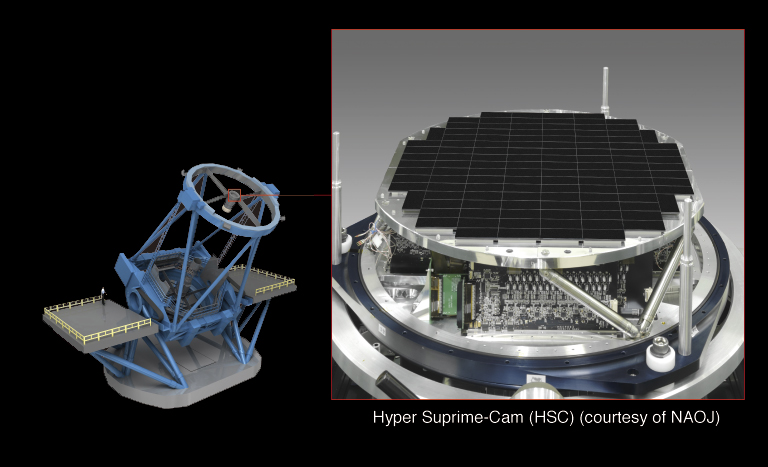
Pixels in the Hyper Suprime-Cam (HSC): 870,000,000
The HSC was first installed on the Subaru telescope in Aug. 2012. Since then, observations have been done as performance tests. In the first light*, the HSC succeeded in capturing about the entirety of the Andromeda Galaxy in one field. The Andromeda Galaxy, at approximately 2.3 million light-years from Earth, is the closest spiral galaxy to the Milky Way Galaxy and has a diameter of over 200,000 light-years. Never before has a large telescope on Earth been able to capture it all at once.
* First light: The initial observation to confirm that optical equipment, such as of a completed telescope, achieves its predicted performance.
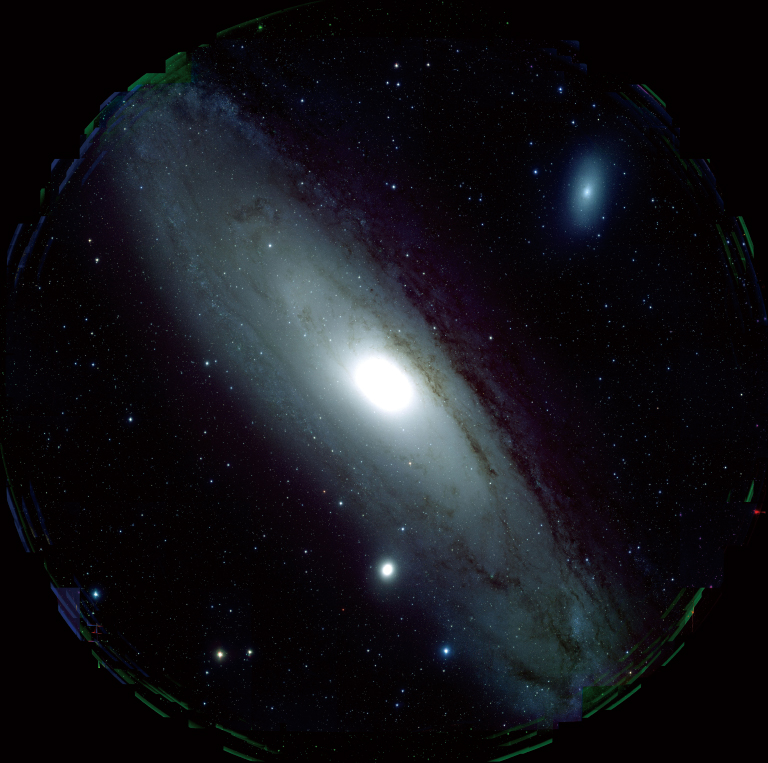
The Andromeda Galaxy (M31), captured by the Subaru Telescope (courtesy of NAOJ)
Flatness expected of the sensor area of the CCDs for the Subaru Telescope: 20 µm for 3 cm (6.6 mm for 100 m) (1 µm = 1/1000 mm)
1μm=1/1000mm
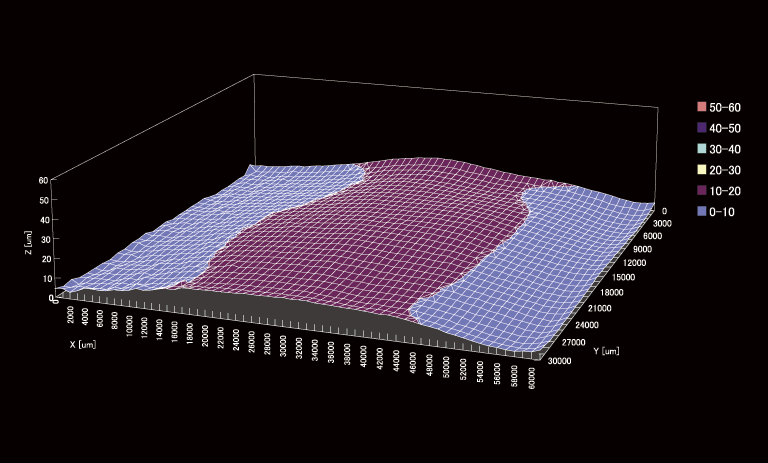
CCD flatness: Flatness of about 10 µm achieved while CCDs cannot be ground after manufacturing
Large-area CCDs tend to have poor flatness due to warpage, etc. However, we established assembly technology to minimize warpage, keeping the variation in height in the whole area tiled together down to about 40 µm. This CCD technology is being pushed into soft X-ray direct detectors, Raman spectroscopic analysis, etc., so there should also be useful applications for NIR, soft X-rays, electron beams, etc. in the future.
Quantum efficiency with a wavelength of 1 µm: 40%
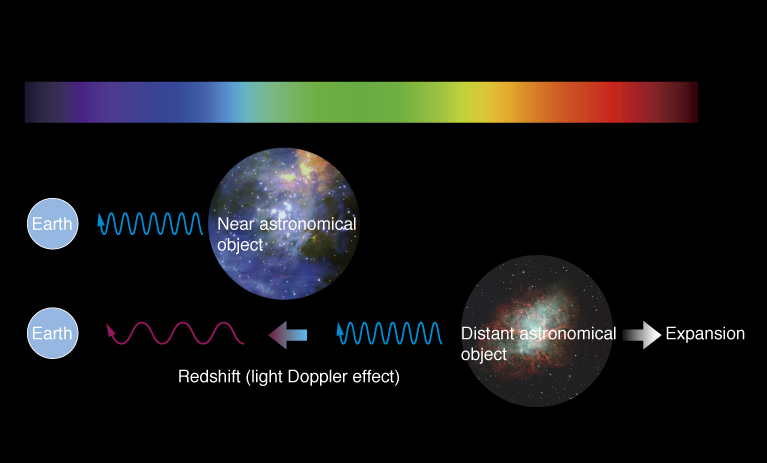
Higher NIR sensitivity in CCDs is optimal for observation of distant astronomical objects
The CCDs used in the Subaru Telescope use a fully-depleted, back-illuminated structure with thick silicon to achieve high sensitivity in the near-infrared (NIR) range. Since the light from astronomical objects that are moving away is shifted to longer wavelengths (red), by observing the shift in wavelengths in galactic spectral lines, the speed of an object can be deduced. The CCDs in the HSC have silicon thickness of 200 μm, five times that of previous CCDs, to improve quantum efficiency in the NIR range, and a back bias is applied to N-type silicon with ultra-high resistance without crystal defects to achieve full depletion, to control degradation of resolution.
Furthest galaxy detected, 12.91 billion light-years away, by the Subaru Telescope's prime focus camera
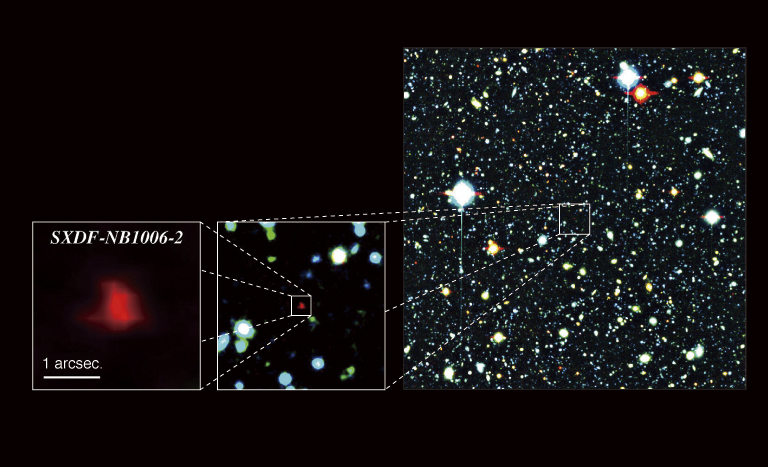
Red object enlarged at lower left: A galaxy 12.91 billion light-years away, SXDF-NB1006-2 (courtesy of NAOJ)
Using the prime focus camera and such of the Subaru Telescope, the universe 12.91 billion years ago (750 million years after the Big Bang) has been observed. The Subaru's Telescope's prime focus camera, with our CCDs, can observe a wide field at once and discover dark, scant distant galaxies.
- Confirmation
-
It looks like you're in the . If this is not your location, please select the correct region or country below.
You're headed to Hamamatsu Photonics website for US (English). If you want to view an other country's site, the optimized information will be provided by selecting options below.
In order to use this website comfortably, we use cookies. For cookie details please see our cookie policy.
- Cookie Policy
-
This website or its third-party tools use cookies, which are necessary to its functioning and required to achieve the purposes illustrated in this cookie policy. By closing the cookie warning banner, scrolling the page, clicking a link or continuing to browse otherwise, you agree to the use of cookies.
Hamamatsu uses cookies in order to enhance your experience on our website and ensure that our website functions.
You can visit this page at any time to learn more about cookies, get the most up to date information on how we use cookies and manage your cookie settings. We will not use cookies for any purpose other than the ones stated, but please note that we reserve the right to update our cookies.
1. What are cookies?
For modern websites to work according to visitor’s expectations, they need to collect certain basic information about visitors. To do this, a site will create small text files which are placed on visitor’s devices (computer or mobile) - these files are known as cookies when you access a website. Cookies are used in order to make websites function and work efficiently. Cookies are uniquely assigned to each visitor and can only be read by a web server in the domain that issued the cookie to the visitor. Cookies cannot be used to run programs or deliver viruses to a visitor’s device.
Cookies do various jobs which make the visitor’s experience of the internet much smoother and more interactive. For instance, cookies are used to remember the visitor’s preferences on sites they visit often, to remember language preference and to help navigate between pages more efficiently. Much, though not all, of the data collected is anonymous, though some of it is designed to detect browsing patterns and approximate geographical location to improve the visitor experience.
Certain type of cookies may require the data subject’s consent before storing them on the computer.
2. What are the different types of cookies?
This website uses two types of cookies:
- First party cookies. For our website, the first party cookies are controlled and maintained by Hamamatsu. No other parties have access to these cookies.
- Third party cookies. These cookies are implemented by organizations outside Hamamatsu. We do not have access to the data in these cookies, but we use these cookies to improve the overall website experience.
3. How do we use cookies?
This website uses cookies for following purposes:
- Certain cookies are necessary for our website to function. These are strictly necessary cookies and are required to enable website access, support navigation or provide relevant content. These cookies direct you to the correct region or country, and support security and ecommerce. Strictly necessary cookies also enforce your privacy preferences. Without these strictly necessary cookies, much of our website will not function.
- Analytics cookies are used to track website usage. This data enables us to improve our website usability, performance and website administration. In our analytics cookies, we do not store any personal identifying information.
- Functionality cookies. These are used to recognize you when you return to our website. This enables us to personalize our content for you, greet you by name and remember your preferences (for example, your choice of language or region).
- These cookies record your visit to our website, the pages you have visited and the links you have followed. We will use this information to make our website and the advertising displayed on it more relevant to your interests. We may also share this information with third parties for this purpose.
Cookies help us help you. Through the use of cookies, we learn what is important to our visitors and we develop and enhance website content and functionality to support your experience. Much of our website can be accessed if cookies are disabled, however certain website functions may not work. And, we believe your current and future visits will be enhanced if cookies are enabled.
4. Which cookies do we use?
There are two ways to manage cookie preferences.
- You can set your cookie preferences on your device or in your browser.
- You can set your cookie preferences at the website level.
If you don’t want to receive cookies, you can modify your browser so that it notifies you when cookies are sent to it or you can refuse cookies altogether. You can also delete cookies that have already been set.
If you wish to restrict or block web browser cookies which are set on your device then you can do this through your browser settings; the Help function within your browser should tell you how. Alternatively, you may wish to visit www.aboutcookies.org, which contains comprehensive information on how to do this on a wide variety of desktop browsers.
5. What are Internet tags and how do we use them with cookies?
Occasionally, we may use internet tags (also known as action tags, single-pixel GIFs, clear GIFs, invisible GIFs and 1-by-1 GIFs) at this site and may deploy these tags/cookies through a third-party advertising partner or a web analytical service partner which may be located and store the respective information (including your IP-address) in a foreign country. These tags/cookies are placed on both online advertisements that bring users to this site and on different pages of this site. We use this technology to measure the visitors' responses to our sites and the effectiveness of our advertising campaigns (including how many times a page is opened and which information is consulted) as well as to evaluate your use of this website. The third-party partner or the web analytical service partner may be able to collect data about visitors to our and other sites because of these internet tags/cookies, may compose reports regarding the website’s activity for us and may provide further services which are related to the use of the website and the internet. They may provide such information to other parties if there is a legal requirement that they do so, or if they hire the other parties to process information on their behalf.
If you would like more information about web tags and cookies associated with on-line advertising or to opt-out of third-party collection of this information, please visit the Network Advertising Initiative website http://www.networkadvertising.org.
6. Analytics and Advertisement Cookies
We use third-party cookies (such as Google Analytics) to track visitors on our website, to get reports about how visitors use the website and to inform, optimize and serve ads based on someone's past visits to our website.
You may opt-out of Google Analytics cookies by the websites provided by Google:
https://tools.google.com/dlpage/gaoptout?hl=en
As provided in this Privacy Policy (Article 5), you can learn more about opt-out cookies by the website provided by Network Advertising Initiative:
http://www.networkadvertising.org
We inform you that in such case you will not be able to wholly use all functions of our website.
Close











